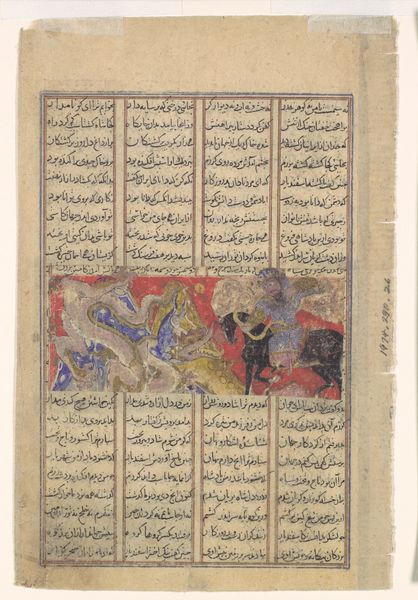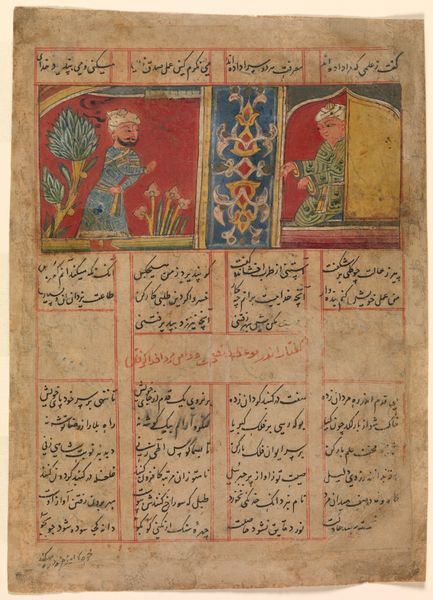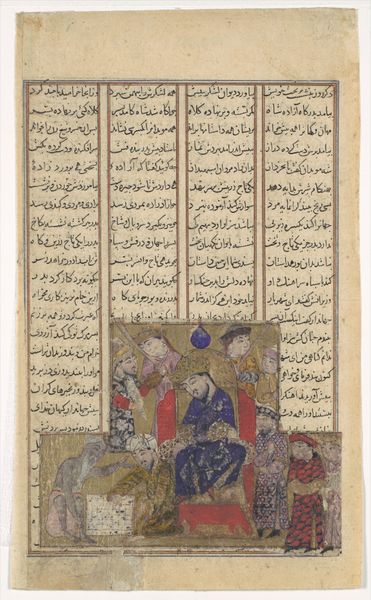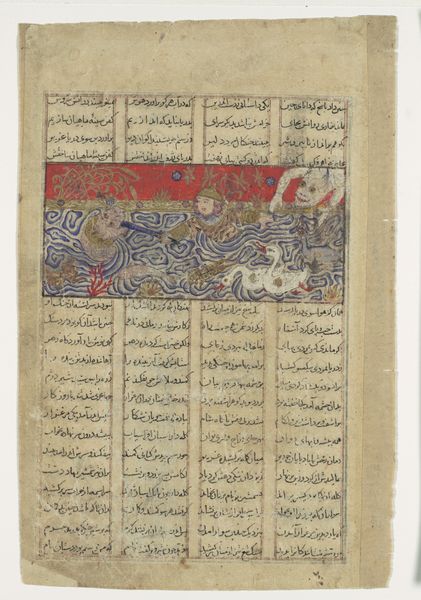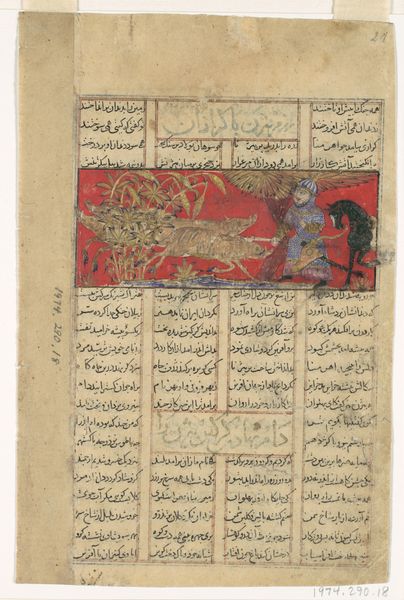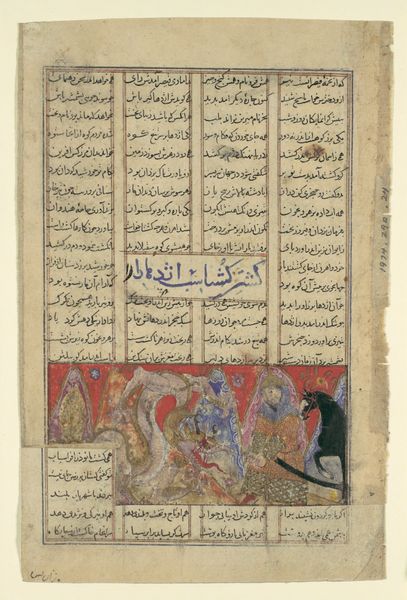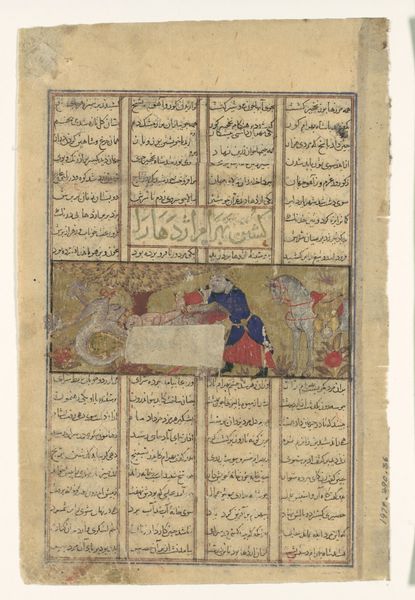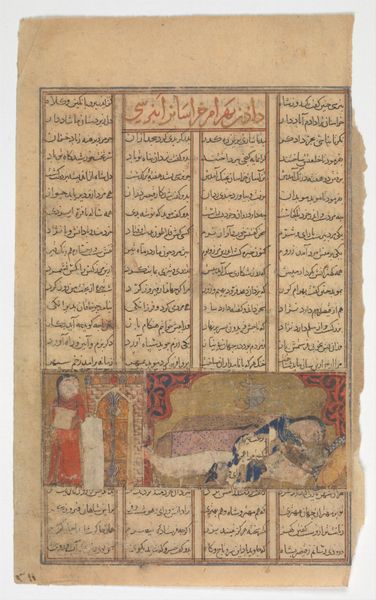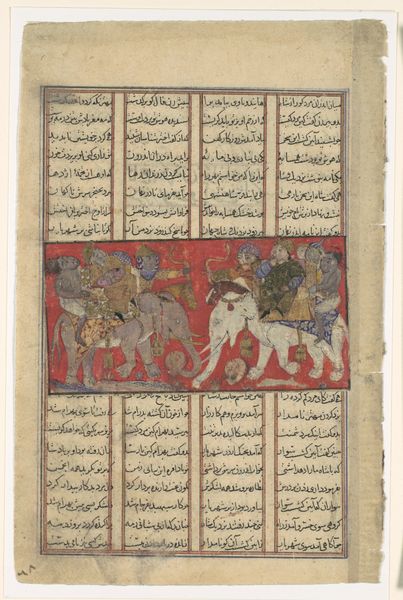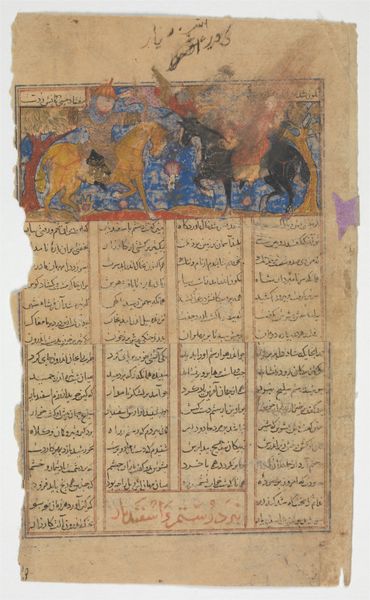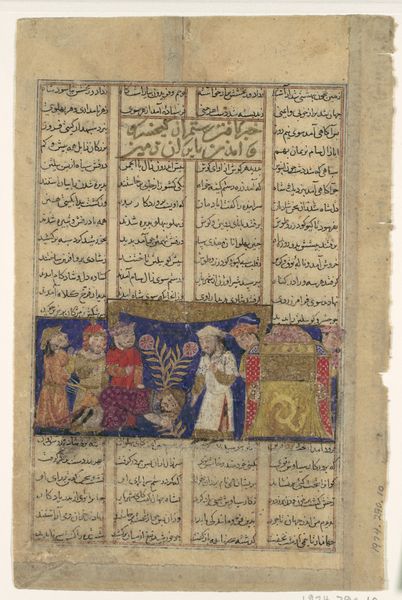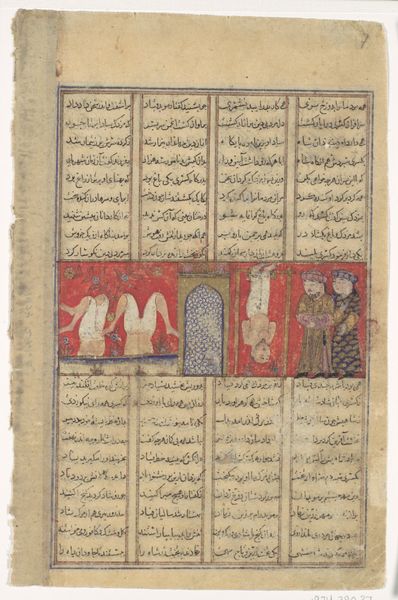
"Rustam Lassos Rakhsh," Folio from a Shahnama (Book of Kings) of Firdausi 1305 - 1365
0:00
0:00
painting, paper, watercolor, ink
#
medieval
#
narrative-art
#
painting
#
landscape
#
paper
#
watercolor
#
ink
#
horse
#
men
#
islamic-art
#
miniature
Dimensions: Painting: H. 1 11/16 in. (4.3 cm) W. 4 3/16 in. (10.6 cm) Page: H. 8 in. (20.3 cm) W. 5 1/8 in. (13 cm) Mat: H. 19 1/4 in. (48.9 cm) W. 14 1/4 in. (36.2 cm)
Copyright: Public Domain
This folio from a Shahnama, or Book of Kings, created around the 15th century, depicts Rustam lassos Rakhsh. The most striking symbolic element here is the horse, Rakhsh. In Persian culture, horses symbolize nobility, strength, and freedom, often linked to the divine. The motif of the horse appears throughout history, from the steeds of the Greek gods to the warhorses of medieval knights. Consider, for example, the white horse in ancient mythology—a symbol of purity and triumph, yet it also appears in darker contexts, like the pale horse of the Apocalypse, embodying death. Such duality reveals the psychological depth of symbols, tapping into our fears and aspirations. The image of Rustam, the hero, dominating Rakhsh speaks to our collective yearning for control and mastery over nature, but also to the powerful bond between man and animal. It is a narrative, emotionally charged, that resonates across cultures and generations. This symbol has resurfaced, evolved, and taken on new meanings in different historical contexts.
Comments
No comments
Be the first to comment and join the conversation on the ultimate creative platform.


